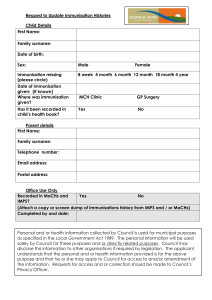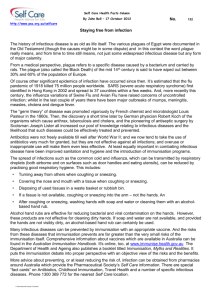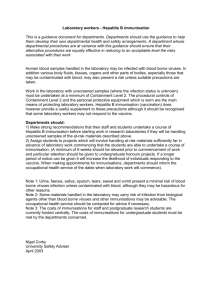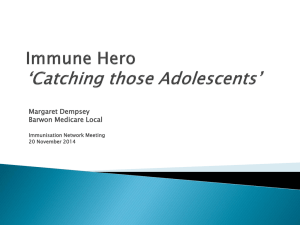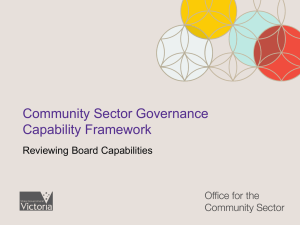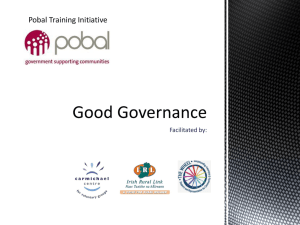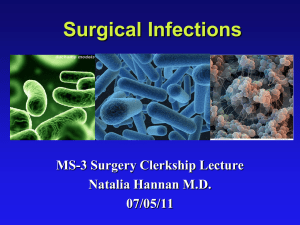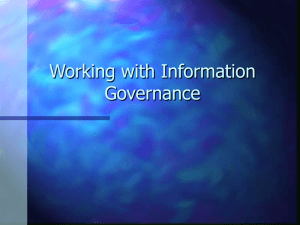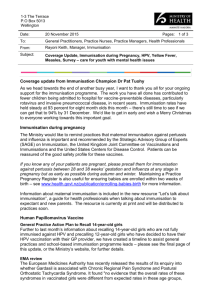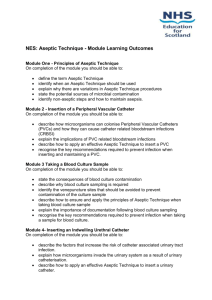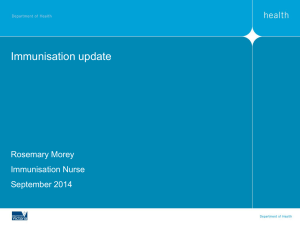Standard 3 - Australian Commission on Safety and Quality in Health
advertisement
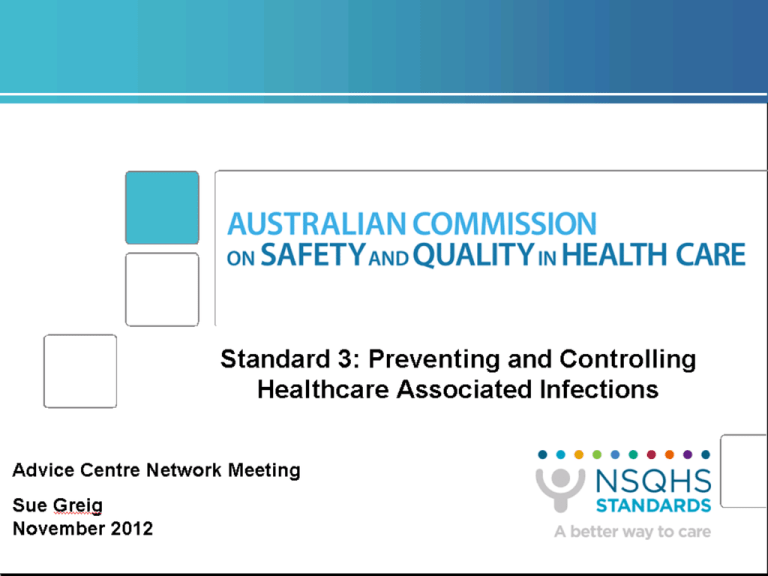
Standard 3: Health Care Associated Infection Criterion 1. Governance and systems for infection prevention, control and surveillance 2. Infection prevention and control strategies 3. Managing patients with infections or colonisation 4. Antimicrobial stewardship 5. Cleaning, disinfection and sterilisation 6. Communicating with patients and carers Standard 3: Health Care Associated Infection The intention of this Standard is to: • Prevent patients from acquiring preventable healthcare associated infections and effectively manage infections when they occur by using evidence-based strategies. • Applied in conjunction with – Standard 1, ‘Governance for Safety and Quality in Health Service Organisations’ and – Standard 2, ‘Partnering with Consumers’ What is important - getting started • Read the whole of Standard 3, the SQIG and the workbook first • Identify what is working well and will provide the evidence to meet the intent of the action, item or criterion • Conduct a gap analysis or baseline review looking at how governance works in your organisation and if it is effective when addressing the risks • Complete a risk assessment for the areas where further work needs to be completed to meet the intent of the standard • Prioritise action based on the findings of the gap analysis and risk assessment so they reflect the local context Why have a Standard about preventing infection? • About half healthcare associated infections are thought to be preventable • HAI is the most common complication affecting patients in hospital • Infections increase morbidity, mortality, pain & suffering • Cost to patients, hospital staff and the health system • Mechanisms exist to reduce the rate of infections caused by healthcare. • No single cause of infection, there is no single solution to preventing infections • Successful infection prevention and control requires a range of strategies across the healthcare system 3.6 Immunisation • A workforce immunisation program that complies with current national guidelines. Questions – How do we balance the individual staff right of choice compared with the National Health and Medical Research Council (NH&MRC) immunisation guideline and the Australian Commission on Safety and Quality in Health Care (ACSQHC) new National Standards in respect to staff immunisation? – Will specialty hospitals such as a maternity hospital be required to attain greater immunisation requirements due to the NH&MRC immunisation guideline regarding Pertussis? – Is it the intention of the ACSQHC for all new staff employed to attain compliance to staff immunisation guidelines? – How do we deal with existing staff who have been employed prior to implementation of the new National Standards with regards to staff immunisation? – What information needs to be provided by the hospital to ensure we attain the minimum requires of the new National Standards regarding staff immunisation? Actions that can be considered • Jurisdictional requirements need to be met • Risks to the organisation will be determined by the services provided • Responsibilities of training and contractor organisations • Risk assessment for organisation; policy; data on staff vaccinated, plan for maintaining compliance; 8.18.1 Reuse of medical devices Action is taken to maximise the coverage of the relevant workforce trained in a competency-based program to decontaminate reusable medical devices Questions • Who is the relevant workforce? • Does this mean CSSD staff? • Or are we talking to the level of nursing staff wiping down a blood pressure cuff requiring competency based training? • Competency based training packages – is “standard and transmission based precautions” enough for clinical staff? Actions that can be considered • This will be determined locally, based on activities undertaken and being performed • Training may be additional to SSD staff as there may be reusable devices utilised outside the theatres that will require the staff to decontaminate then e.g. nasoendoscopes in an ENT clinic • Training in standard and transmission based precautions is not sufficient in these situations and requires local assessment to determine what training will maintain safety of the workforce, patient and equipment. This may include proprietary training by suppliers, network/district training or online training resources that are competency based. 3.10 Aseptic Technique • Developing and implementing protocols for Aseptic Technique Questions • Who assess surgical procedures? • Is this aseptic technique throughout the whole procedure? • Does this come under peer review of college approval to practice? • Do we have to assess the doctors for aseptic technique? (IV insertion) We only have visiting medical officers. Actions that can be considered • The governance structure will determine how aseptic technique will be assessed as a risk in an organisation depending on what procedures are performed where aseptic technique is required. • Consultation and review of contractual agreements will assist to determine how governance will respond. • Consider where the risks are in your organisation and prioritise accordingly • Consider the ACORN standards to use in the operating theatre to assess technique • Peer review may assist but would need to be reviewed to determine how it is undertaken for approval to practice in your organisation Antimicrobial stewardship Safe and appropriate antimicrobial prescribing is a goal of the clinical governance system • A program is in place • Access to current endorsed therapeutic guidelines on antibiotic usage • Monitoring of usage and resistance is undertaken • Action is taken to improve effectiveness of AMS Questions • As a private facility where our Doctors are our consumers and not directly employed by us, how can we tell them which antibiotics they are and aren’t allowed to prescribe. • Has AMS been pushed through the AMA and associated colleges? • How do we change their prescribing habits? Getting started Helpful hints • Assess the current situation – Risk – Current governance arrangements – Current policies, processes and resources – Data currently collected – Any audit results – Current resistance patterns, infections • Awareness raising – Share results • Contractual arrangements co-ordinated by governance systems for medical officers and other contracted services • Identify what you are currently doing • Look for other areas that support AMS • Engage clinicians in the processes • Start small and look for champions • Utilise the resources available • Present results and surveillance data • Feedback • Utilise the SQIG and the other resources available 12-18 November 2012 Antibiotic Awareness Week
